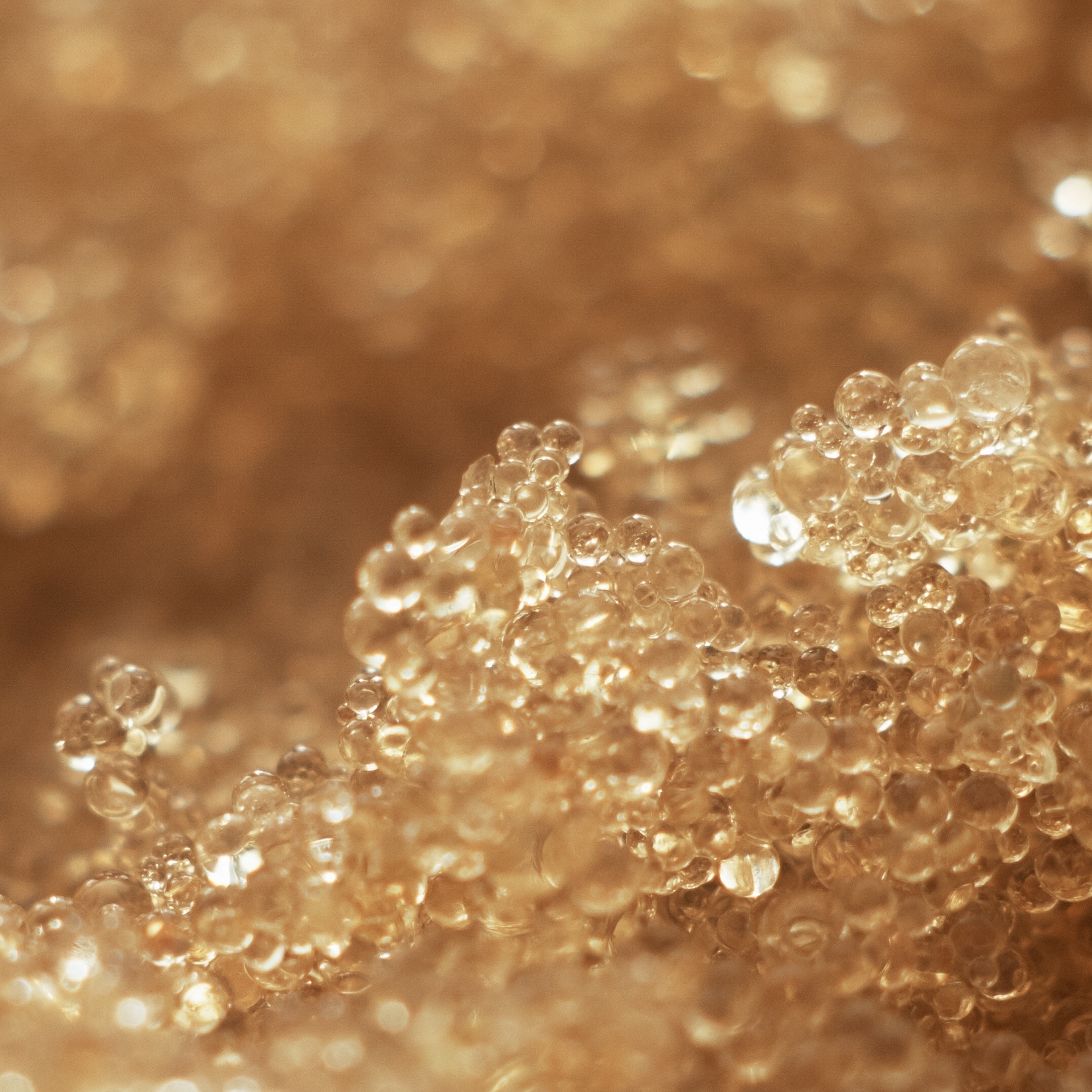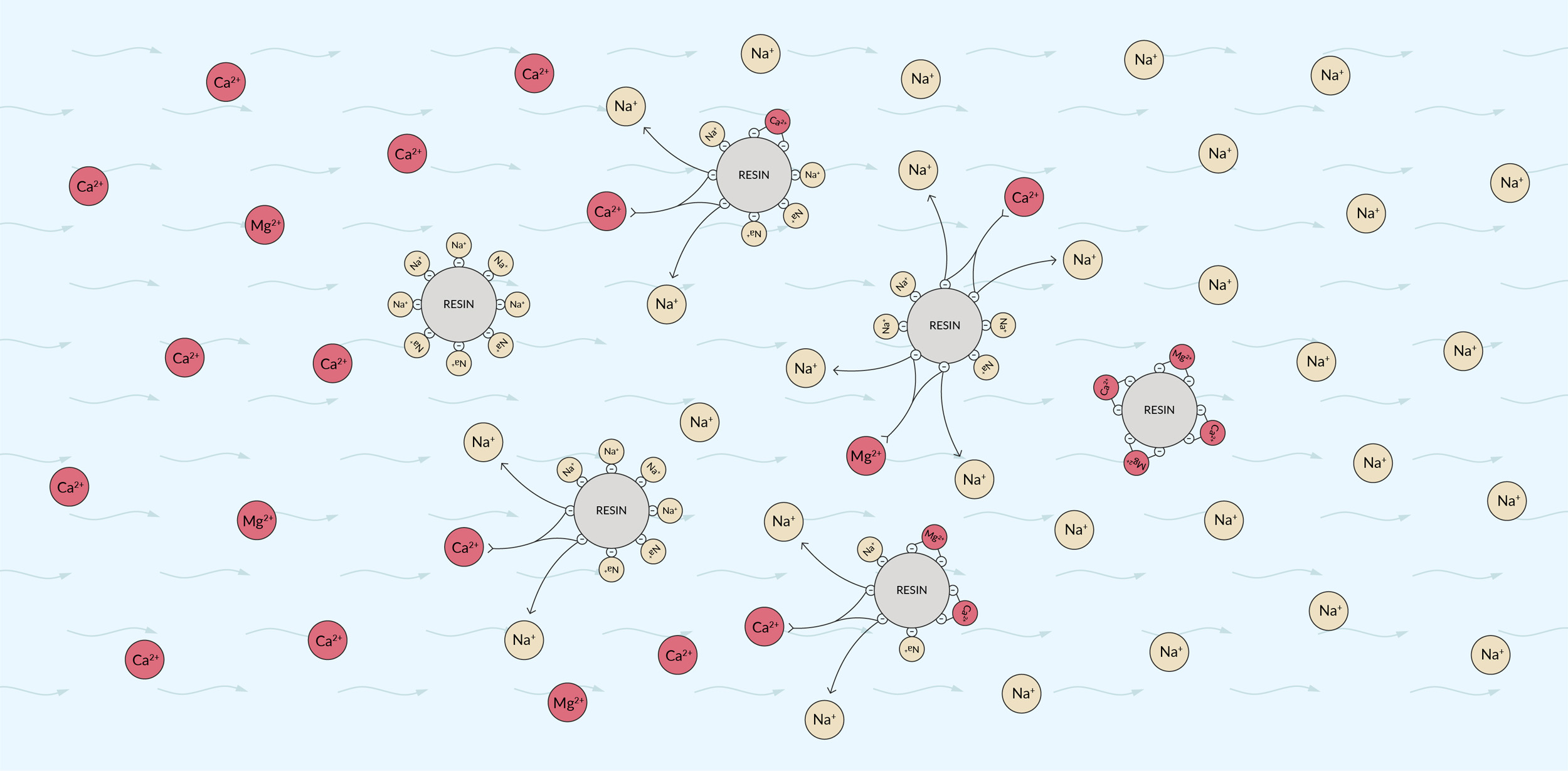 صورة مقربة لراتنج تبادل أيوني مُستخدم في خرطوشة مرشح
صورة مقربة لراتنج تبادل أيوني مُستخدم في خرطوشة مرشح
الحد من عسر الماء
The net charge in water must always be neutral. Therefore, if you remove positively charged calcium ions, either of two things must occur: An equivalent amount of negatively charged ions (such as bicarbonate) must be removed or the calcium ions must be replaced with other positively charged ions (such as sodium). Ion-exchange resins work by removing the ions we want to remove and replacing them with other ions of the same type of charge that don’t contribute to hardness. Usually, they replace calcium ions with sodium, exchanging two sodium ions (Na+) for each calcium ion (Ca2+).
راتنجات التبادل الأيوني
A typical water filter is shaped like a long column and filled with beads of polymer resin. The small beads provide a large surface area to contact the water as it flows past. In the case of a calcium-exchange filter, the resin is made of a polymer that binds positively charged ions. The resin is designed to bind to calcium and magnesium more strongly than to sodium. Initially, the resin is saturated with sodium ions — thus, sodium ions at the surface of each bead are available to be exchanged.
وعندما يتدفق الماء العسر خلال الراتنج، ترتبط أيونات الكالسيوم والماغنيسيوم بالبوليمر، مما يؤدي إلى نزوح الصوديوم إلى الماء. وبالتالي، فإن الماء المتدفق من المرشح يكون أكثر يسرًا، لكنه يحتوي على نسبة أكبر من الصوديوم.
 يوضح الشكل أعلاه مسار الماء العسر خلال تعرضه لراتنجات التبادل الأيوني. على اليسار: يتدفق الماء العسر إلى الداخل في المنتصف: يتم تبادل أيونات الكالسيوم والماغنيسيوم مع أيونات الصوديوم على سطح الراتنجات. على اليمين: يتدفق الماء اليسر عند إضافة أيونات الصوديوم نحو الخارج
يوضح الشكل أعلاه مسار الماء العسر خلال تعرضه لراتنجات التبادل الأيوني. على اليسار: يتدفق الماء العسر إلى الداخل في المنتصف: يتم تبادل أيونات الكالسيوم والماغنيسيوم مع أيونات الصوديوم على سطح الراتنجات. على اليمين: يتدفق الماء اليسر عند إضافة أيونات الصوديوم نحو الخارج
كي نتمكن من إعادة استخدام المرشحات، يمكن تجديد الراتينجات بمجرد نفاذها عن طريق تمريرها عبر محلول ملحي مركز، مما يجبر الصوديوم على الارتباط بالراتنجات مرة أخرى.